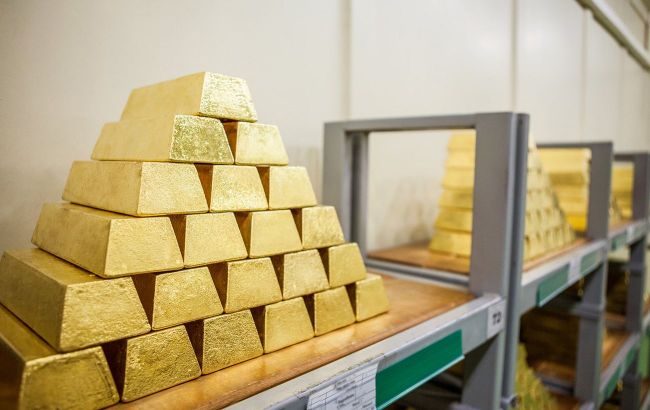Gold prices hit record highs amid US government shutdown
 S&P 500 and Nasdaq futures fell by 0.5% (photo: flickr.com / National Bank of Ukraine)
S&P 500 and Nasdaq futures fell by 0.5% (photo: flickr.com / National Bank of Ukraine)
Against the backdrop of the US government shutdown, gold prices reached a record high of $3,875 per ounce, marking a third consecutive session record, Reuters reported.
On Wednesday, October 1, futures on the New York exchanges (S&P 500 and Nasdaq) fell by 0.5%, while gold prices rose to $3,875 per ounce.
At the same time, it is reported that European futures remained almost unchanged.
By the way, this year gold has already increased in price by more than 45%, demonstrating steady demand from central banks and investors.
Prices of other precious metals
Prices of other precious metals have also risen significantly this week as demand for safe-haven assets spread from gold to platinum and silver.
The spot price of silver on Wednesday increased by 0.9% to 47.0525 dollars per ounce, while the spot price of platinum fell by 0.3% to 1,572.18 dollars per ounce.
Since the beginning of 2025, silver prices have risen by 62%, and platinum prices by 76%.
Outlook for precious metals
According to the CME FedWatch tool, investors are pricing in a 90% probability of a 25-basis-point rate cut in October. Another adjustment is possible in December, with alikelihoody estimated at 75%.
Why is gold precious
From an economic perspective, gold is a precious metal because it serves as a universal store of value, especially during crises and periods of inflation. Its limited supply, high liquidity, and global recognition make gold a reliable asset that preserves purchasing power in the long term.
Unlike paper money, which can depreciate due to issuance, gold has a natural production limit, which enhances its value. Additionally, central banks worldwide utilize it as part of their reserves, further underscoring its economic significance.
Demand from central banks and investors has strengthened gold's position as a safe-haven asset.
Overall, since the beginning of the year, the price of gold has risen by 40%. An additional factor has been the increased geopolitical tensions and risks to the global economy resulting from US President Donald Trump's tariff policy.

